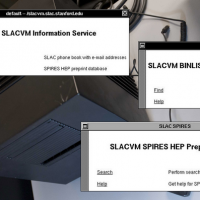After 25 Years, the Web Has a Museum

2014 marks the 25th anniversary of the World Wide Web, and as Tim Berners-Lee says, “The Web as I envisaged it, we have not seen it yet. The future is still so much bigger than the past.” For the near future, the World Wide Web Consortium (W3C) finally made HTML5 an official W3C recommendation. As for the past, the Web has achieved yet another milestone—there’s now a museum.
Can you remember what it was like surfing the Web back in the early '90s? To see how far the Web has come—drum roll—take a look at the oldest US website, dating back to December 1991. From just a few links, who would have thought one day link building would turn out to be a career choice?
Stanford Wayback is a customized version of an open source platform that lets you reconstruct how the Web looked in the past and how a website has changed over time. The archived web assets are provided by Stanford University Libraries, the SLAC Archives and History Office, and alumni of the SLAC "WWW Wizards" group. The SLAC National Accelerator Laboratory, originally named Stanford Linear Accelerator Center, is a United States Department of Energy National Laboratory operated by Stanford University.
"Thankfully, a handful of staff at SLAC who worked on the early Web fortuitously saved the files, along with their timestamps, associated with the first and several subsequent versions of their website," says Nicholas Taylor, Web archiving service manager for Stanford Libraries.
And, if you’re Interested in discussions on what the future might hold for the Web, check out the Pew Research Internet Project for what might be in store, ranging from cyber attacks to the Internet of Things to artificial intelligence.
Finally, here’s another milestone in the Web’s evolution. The Associated Press @AP Stylebook tweeted on April 16, 2010: “Responding to reader input, we are changing Web site to website. This appears on Stylebook Online today and in the 2010 book next month.” Writers everywhere began lowercasing and making "website" into one word. The Web remains uppercase.

